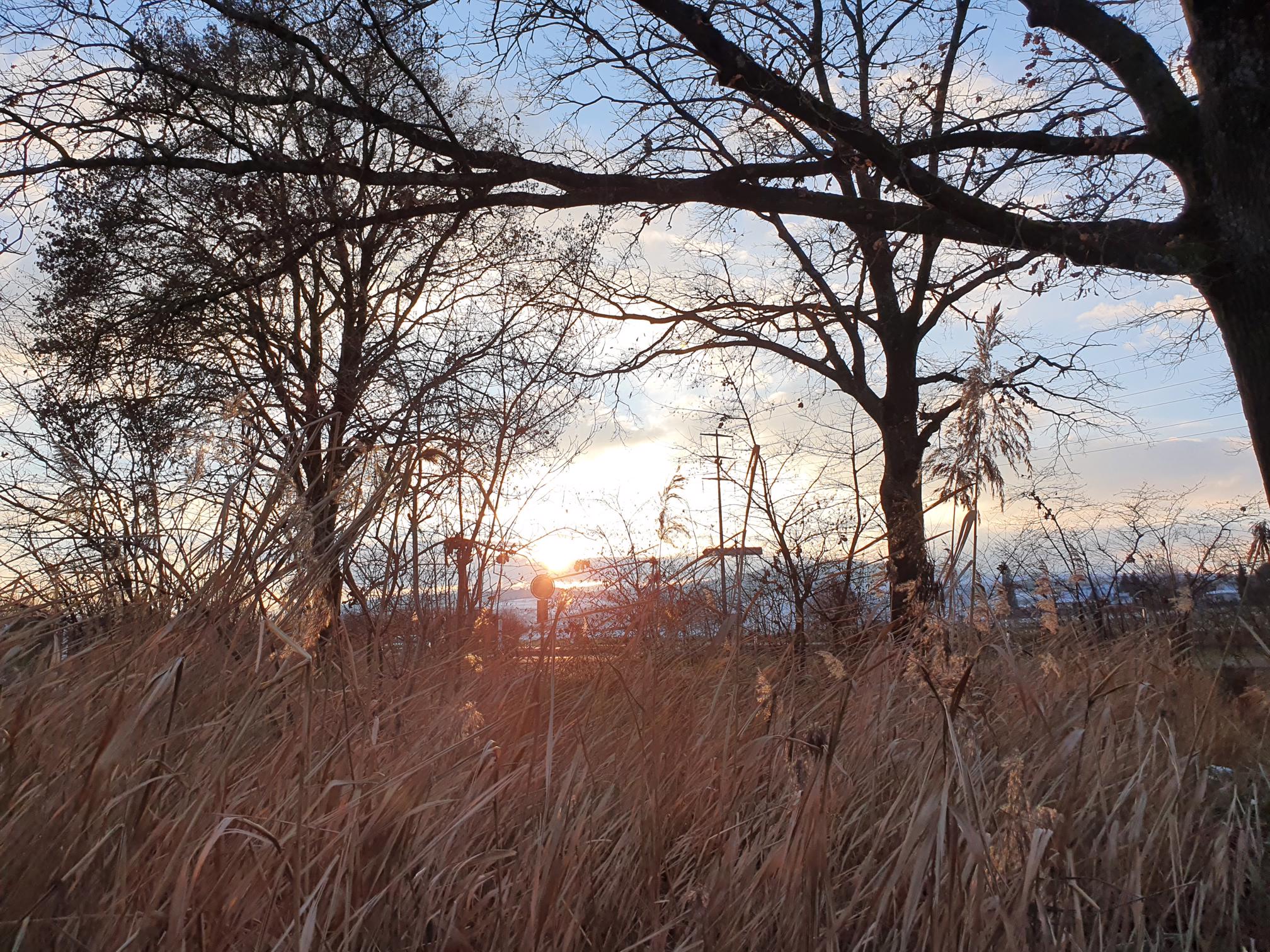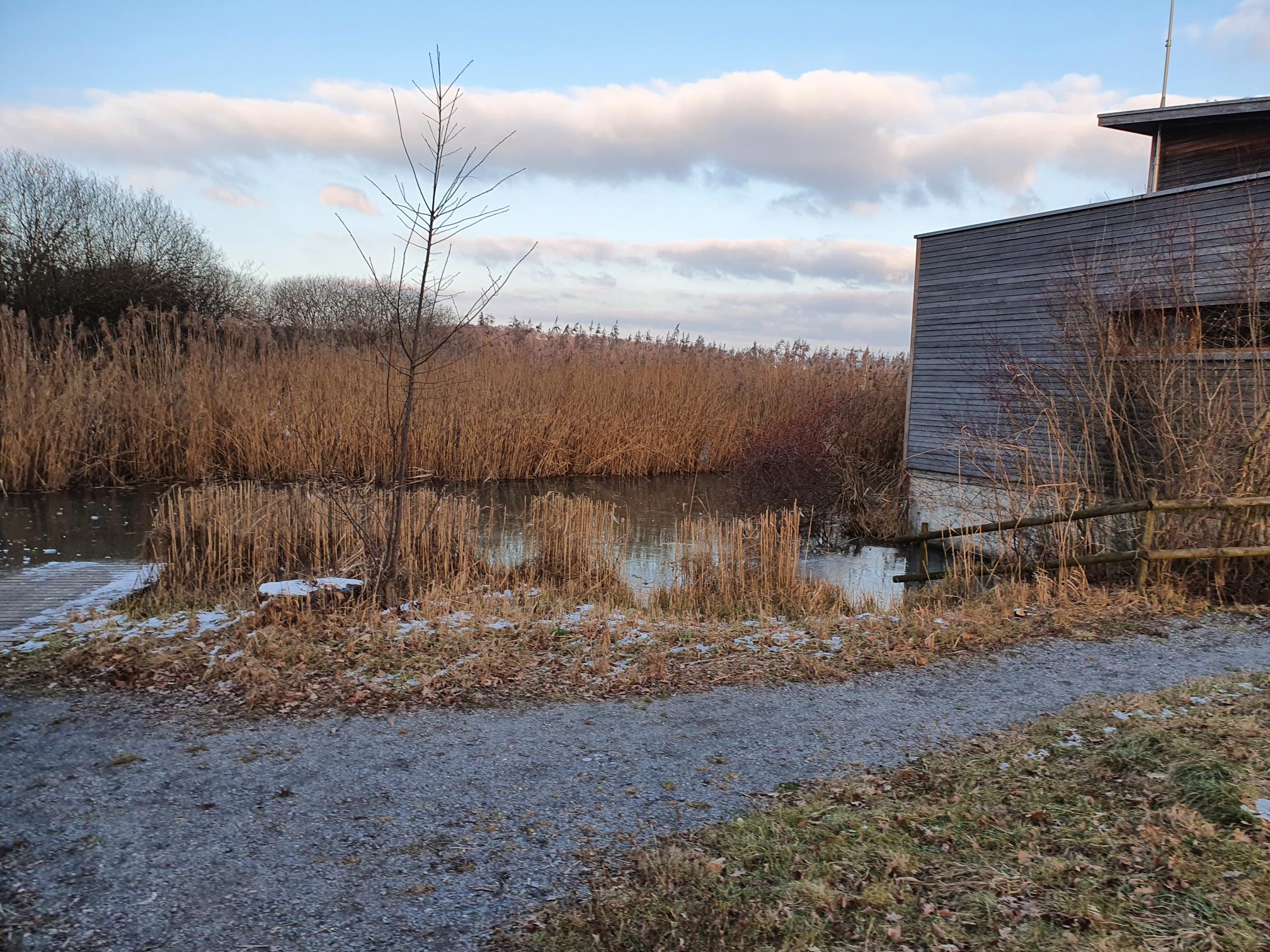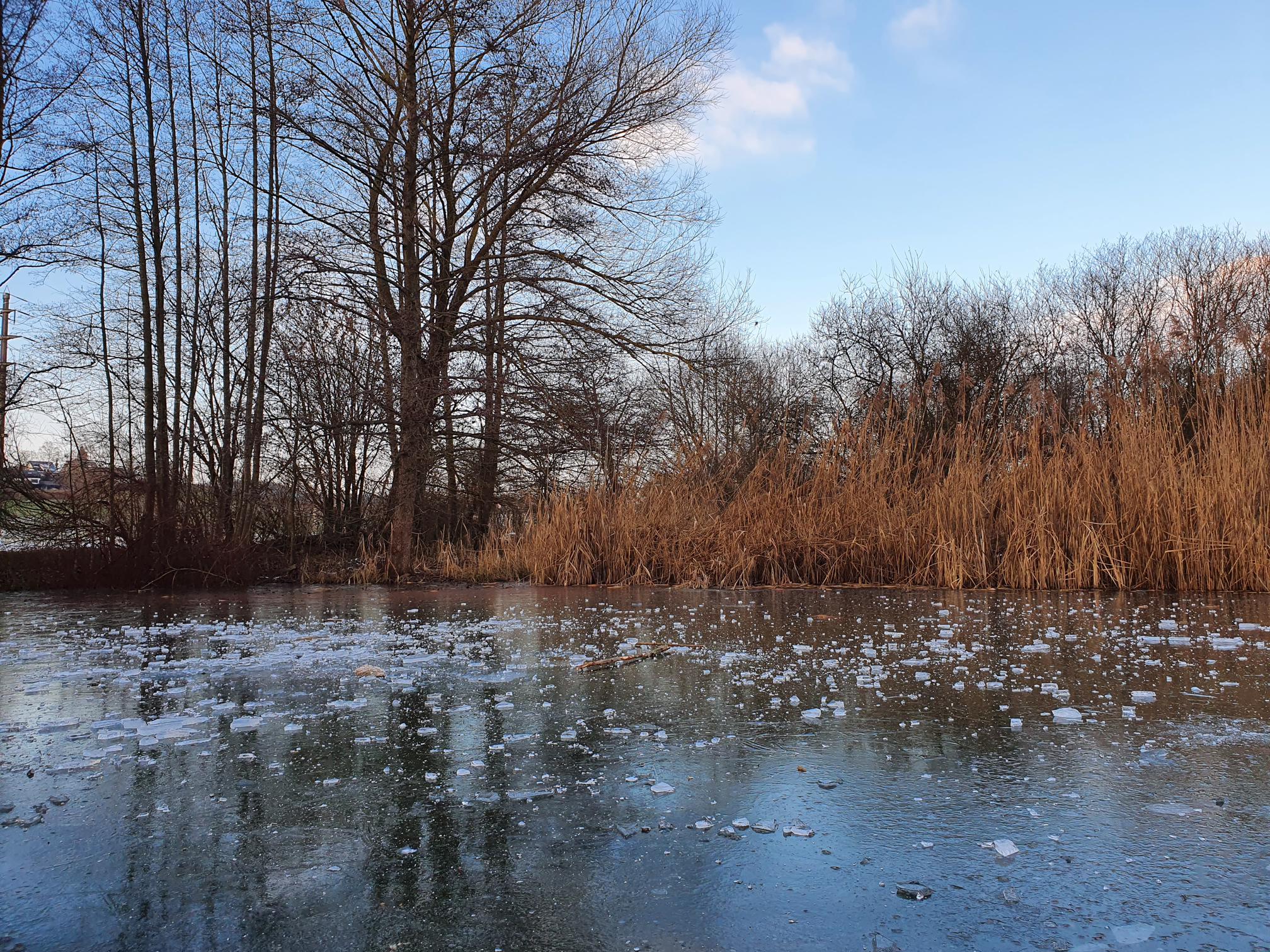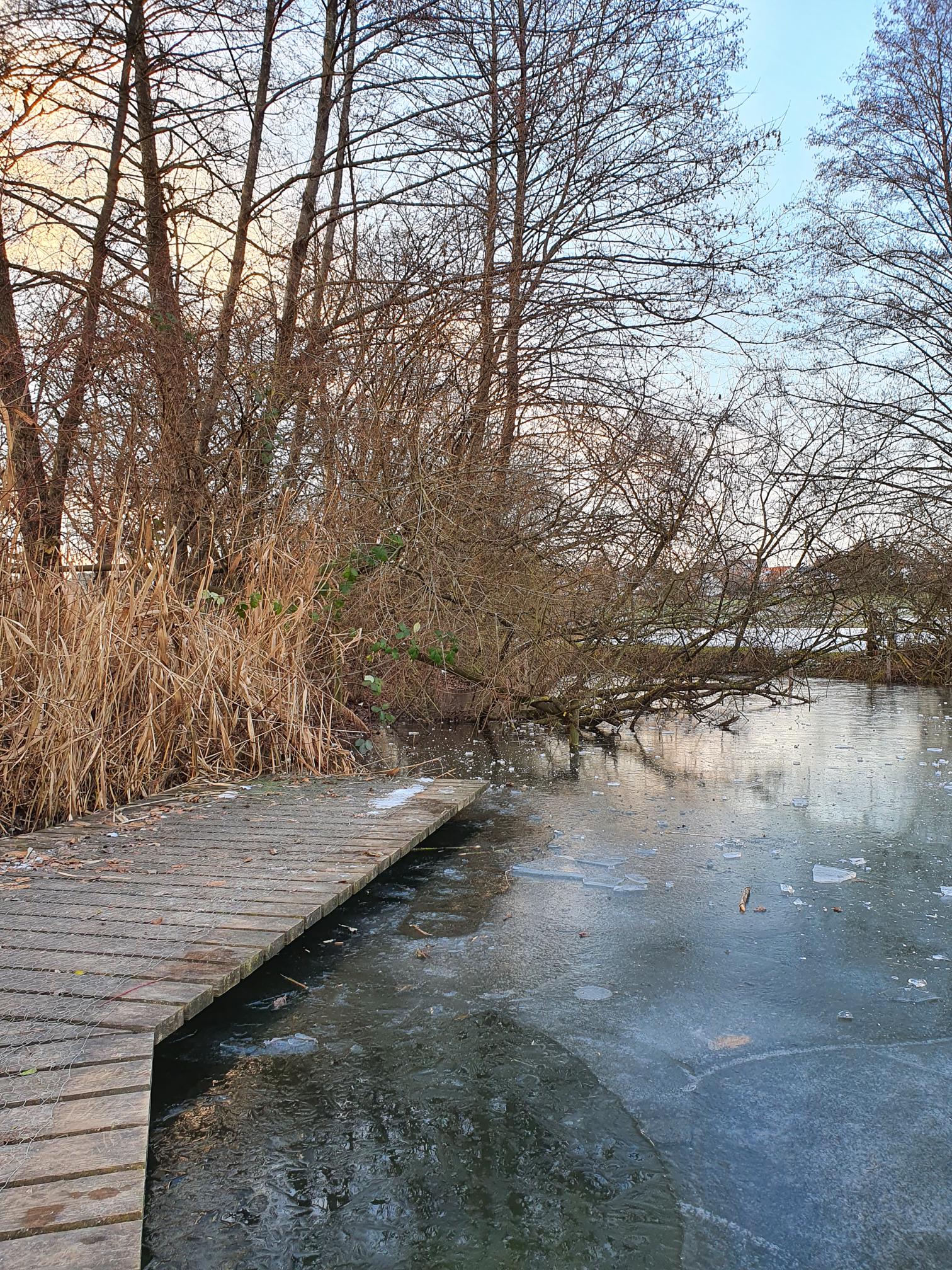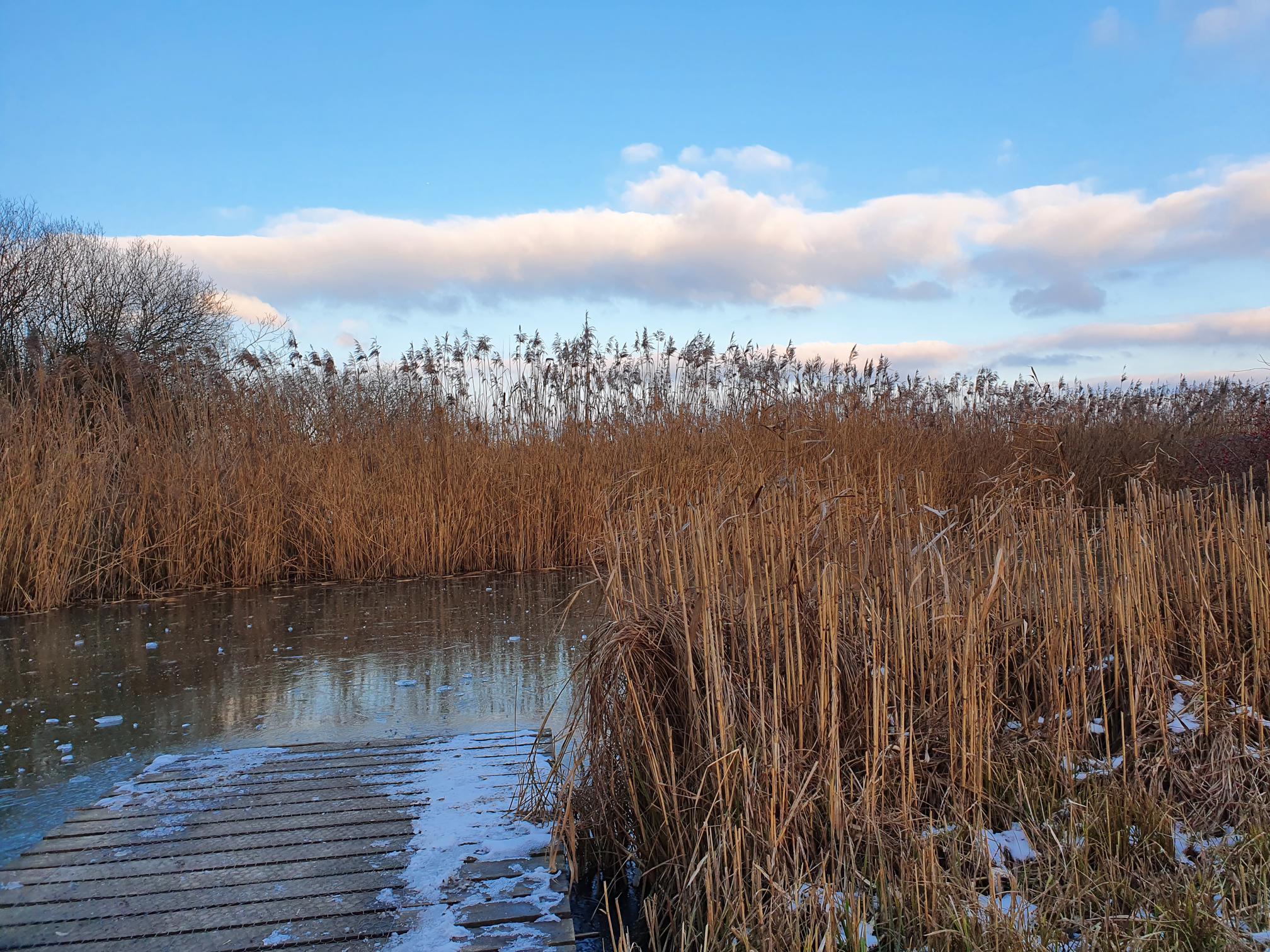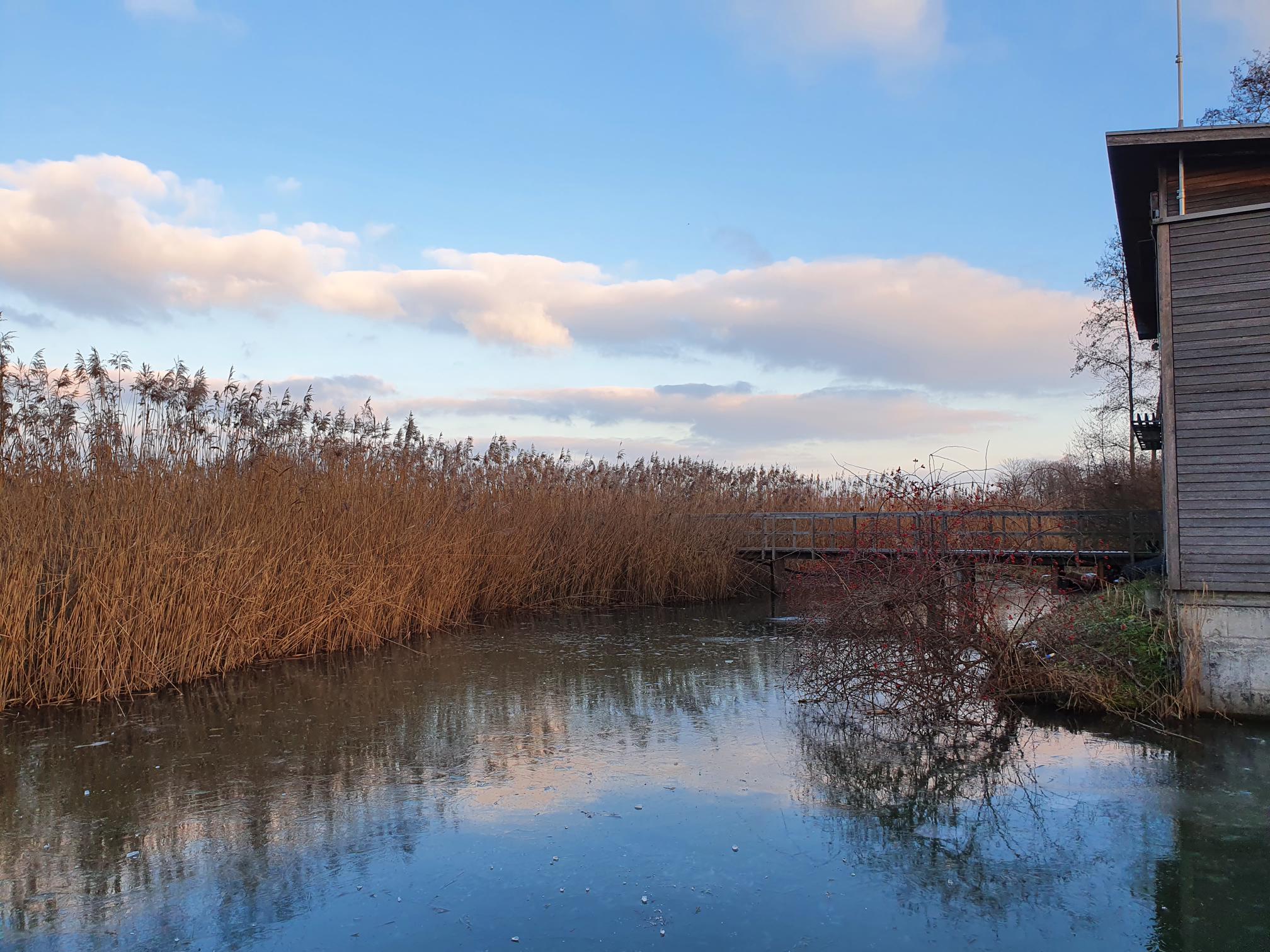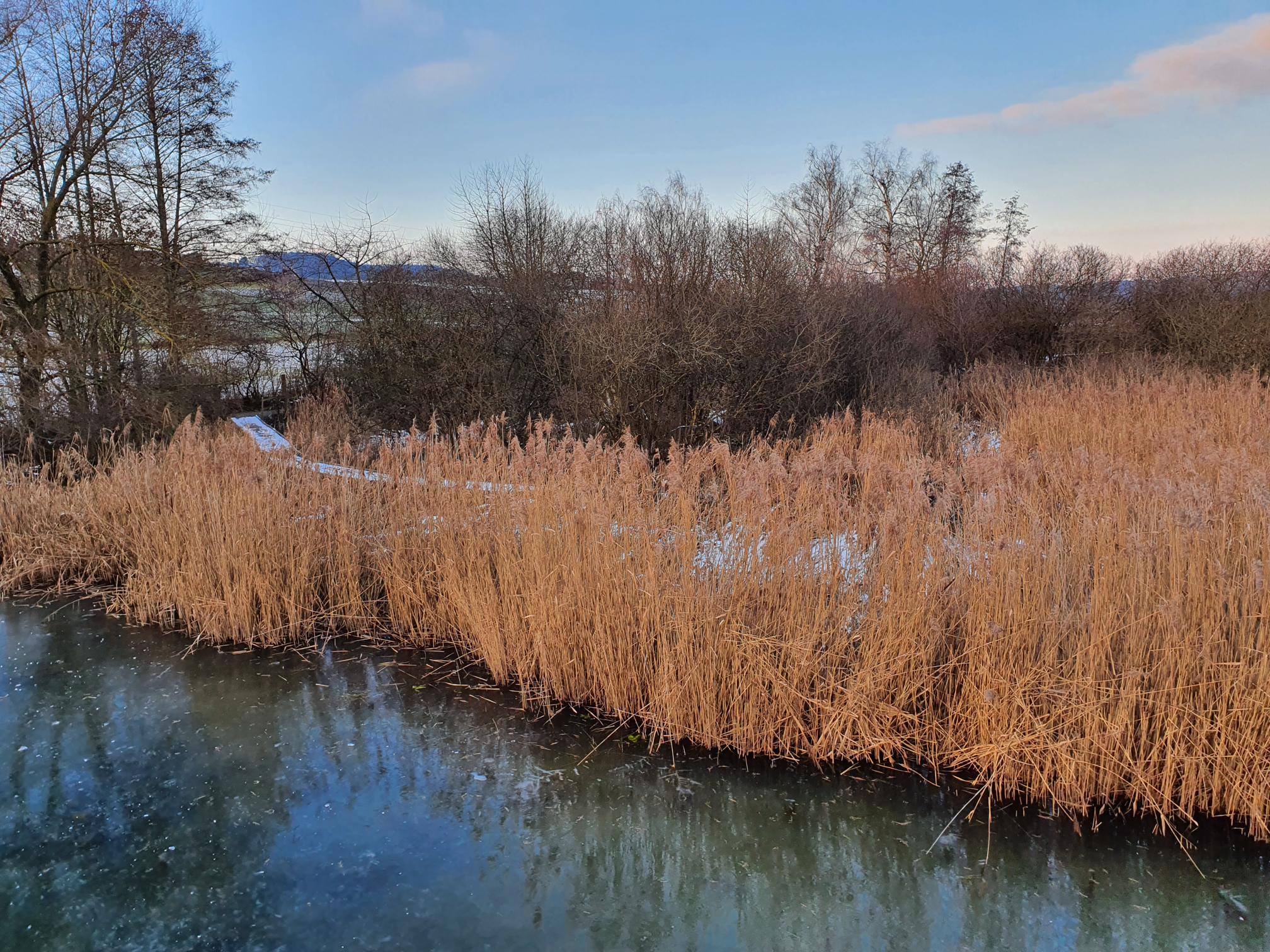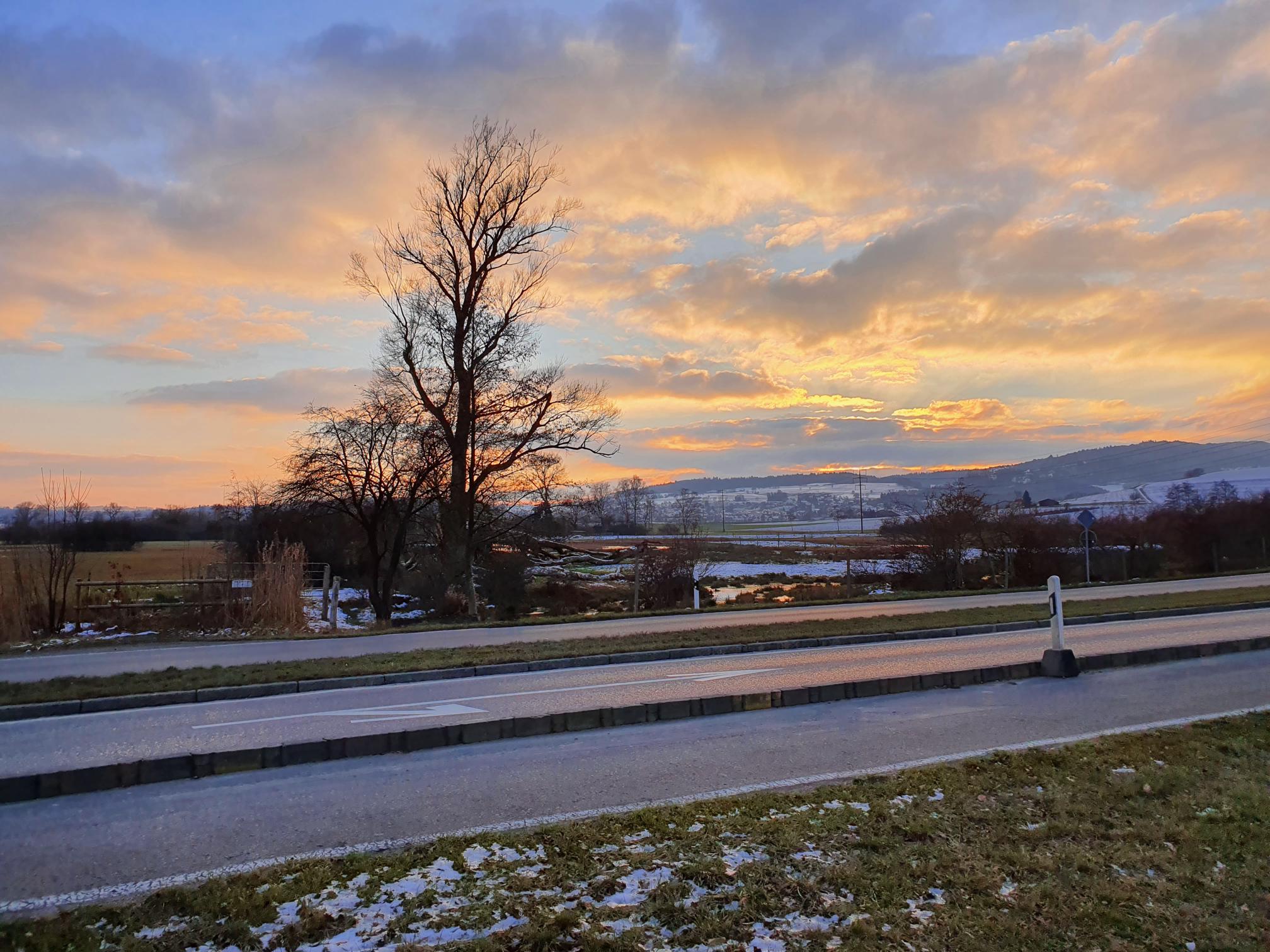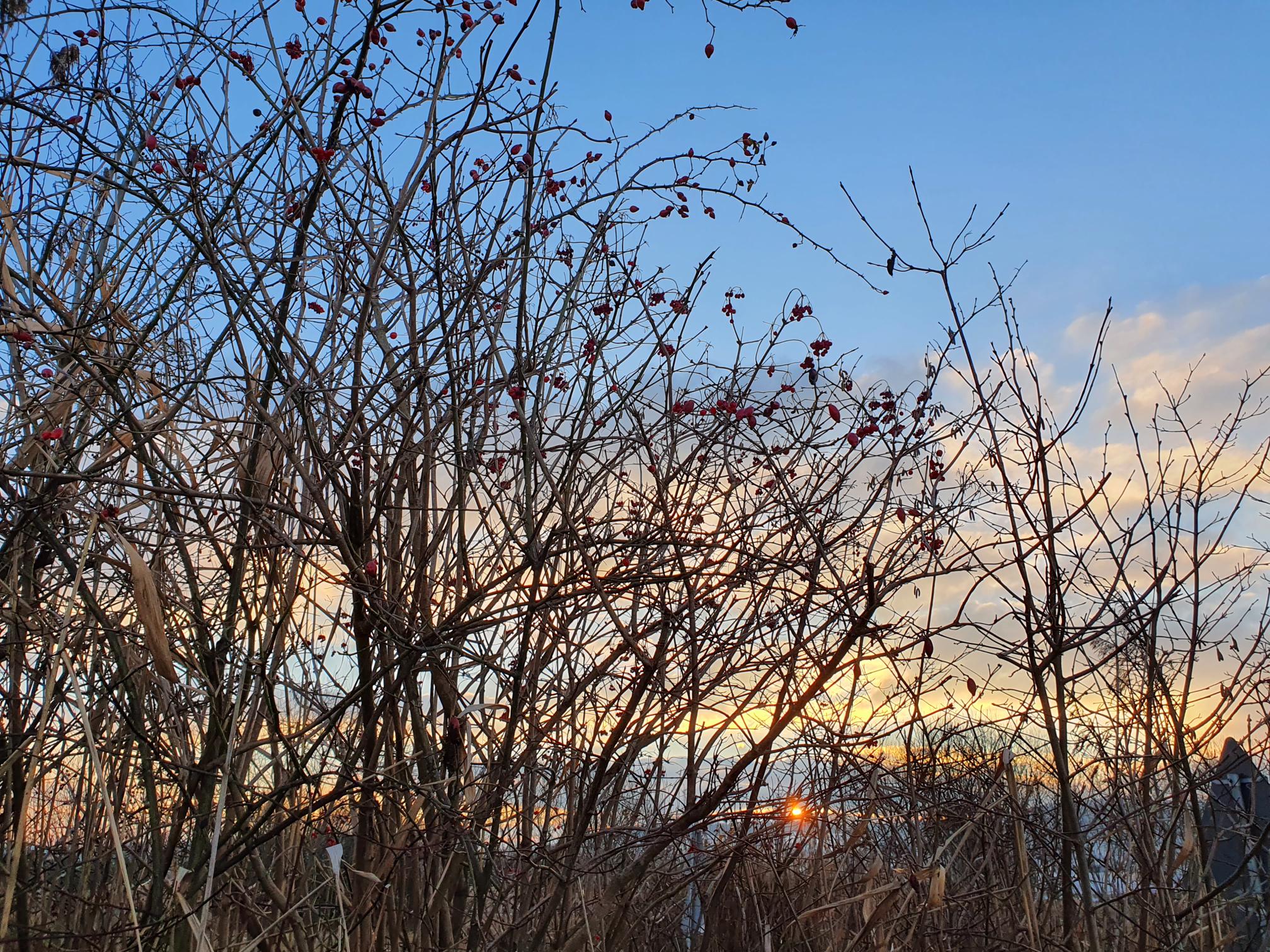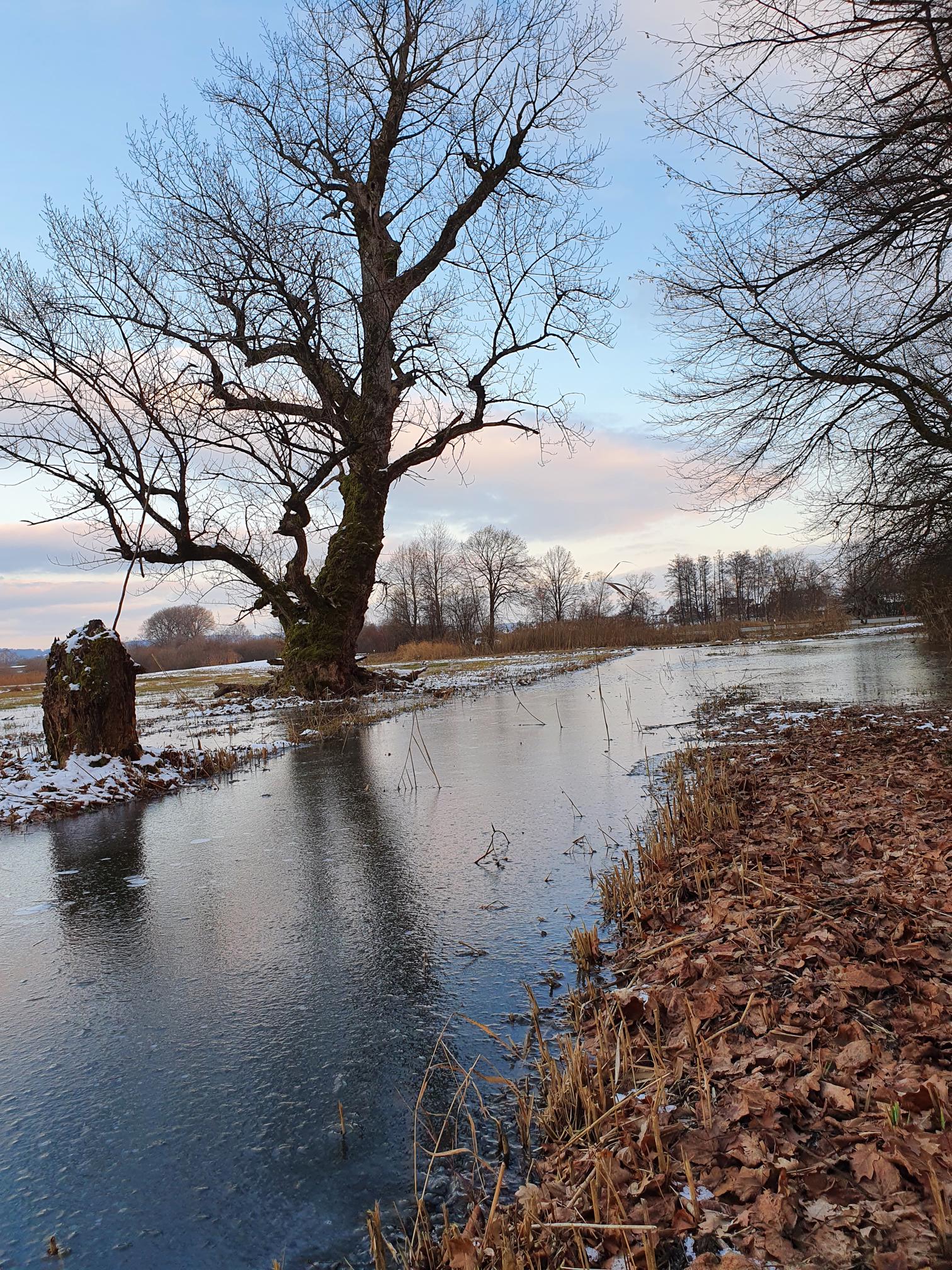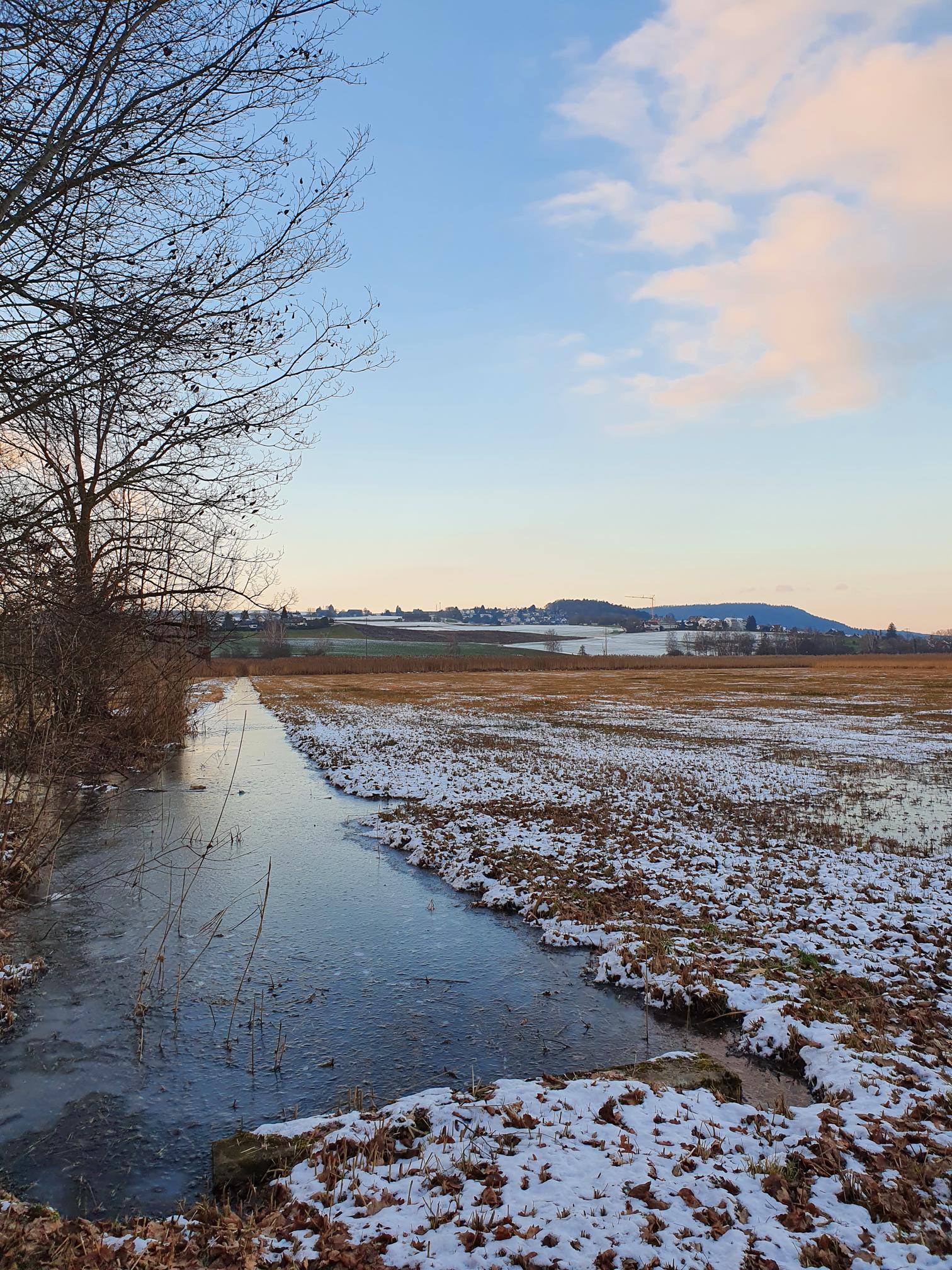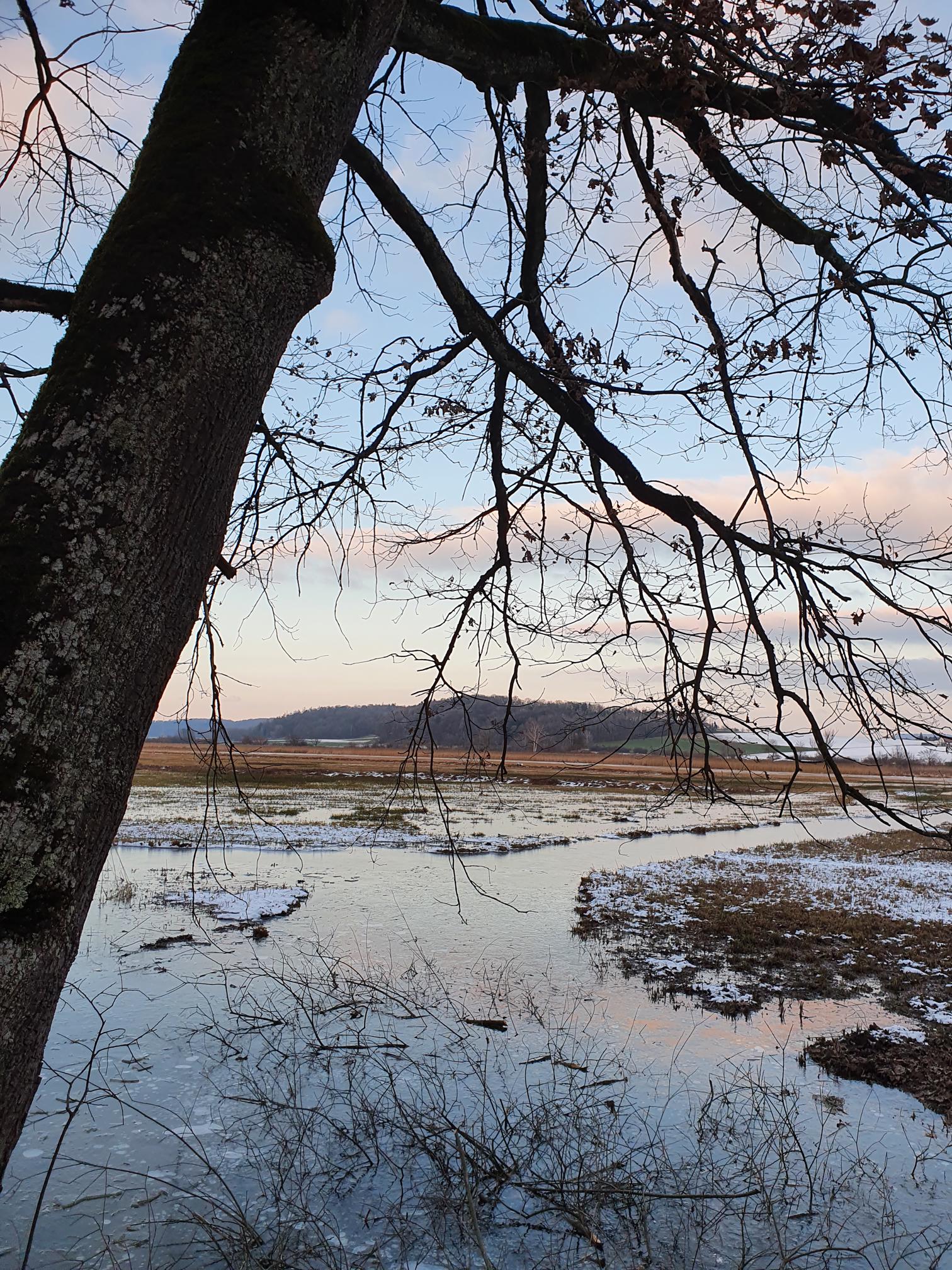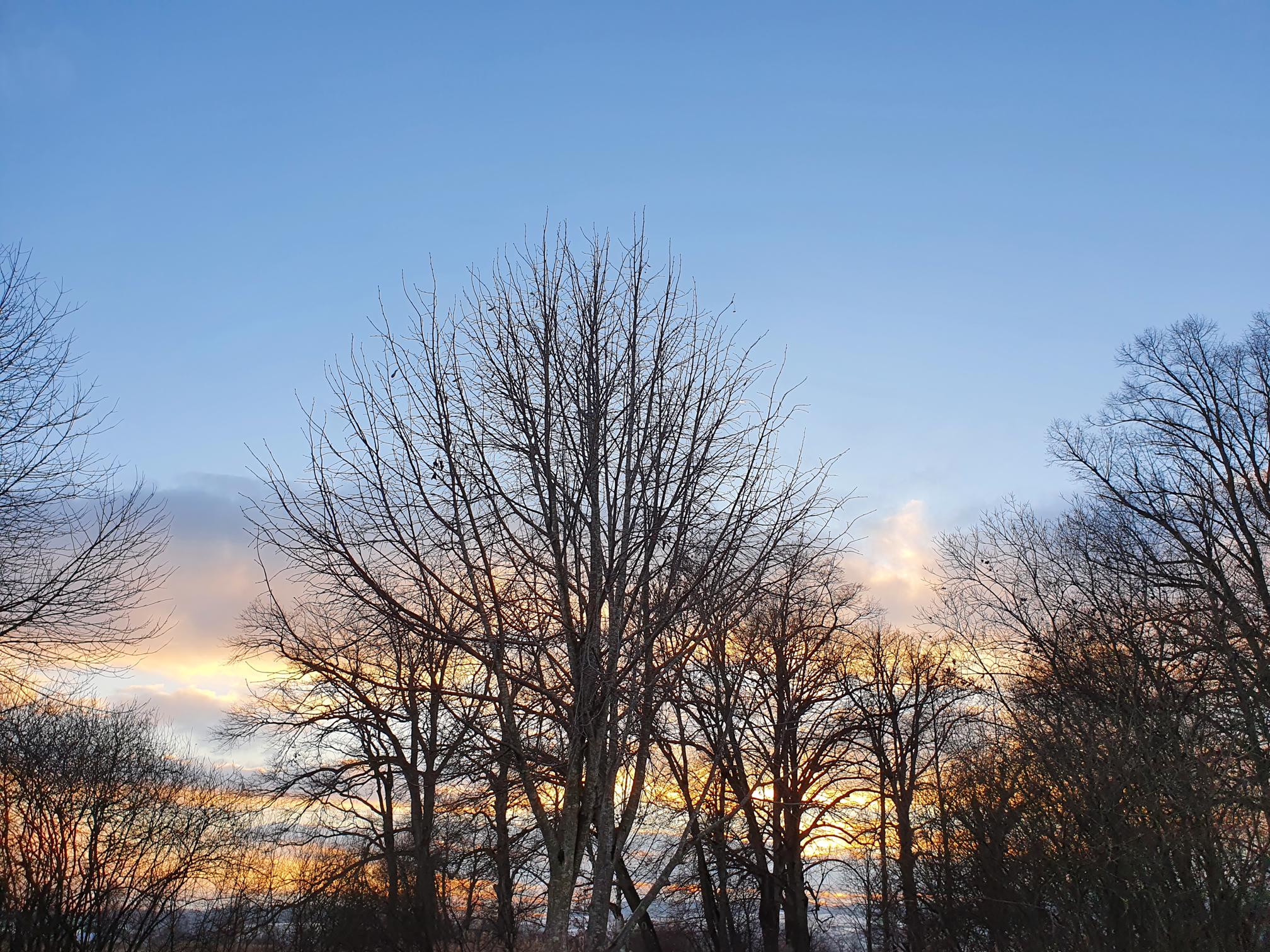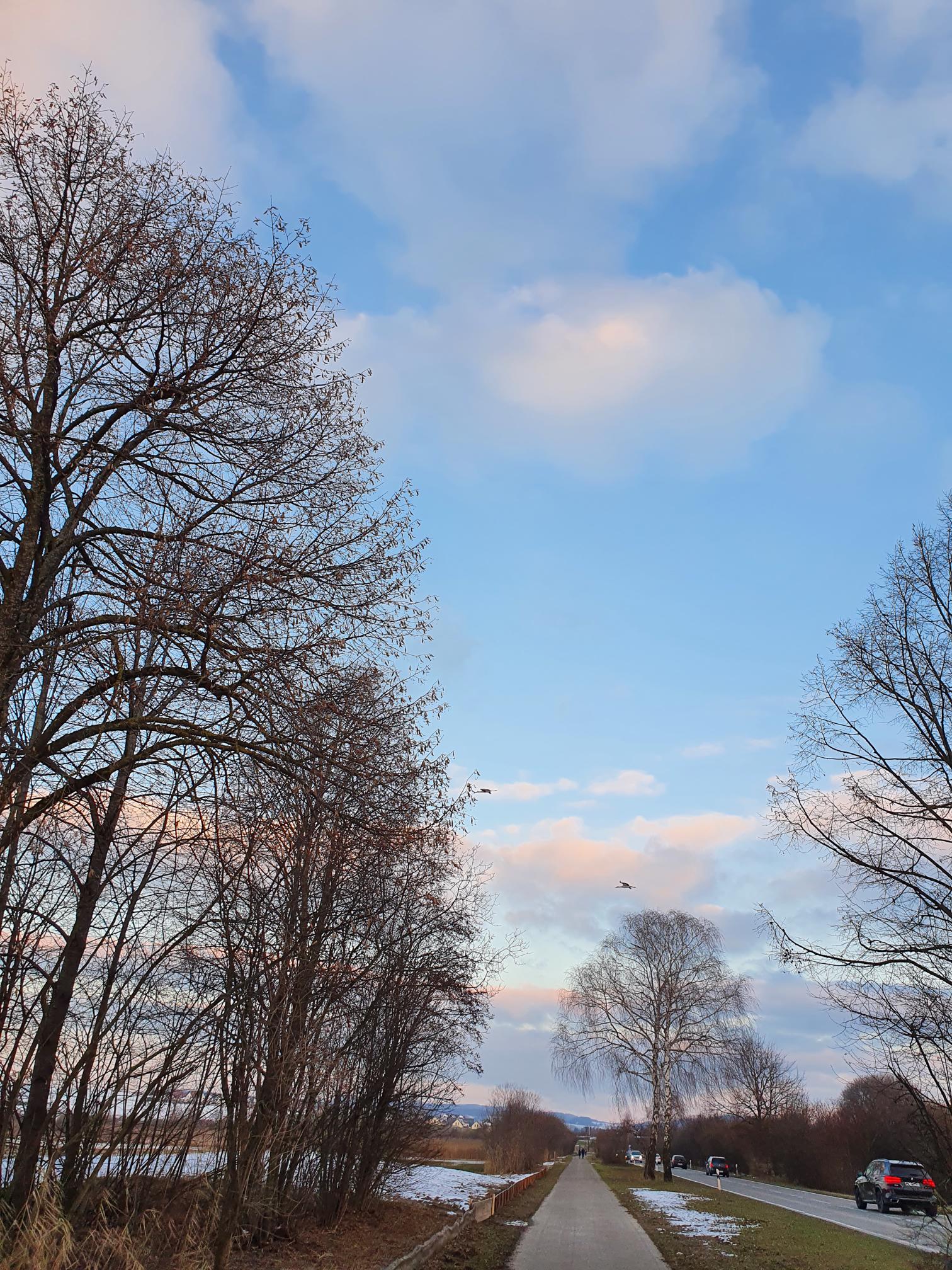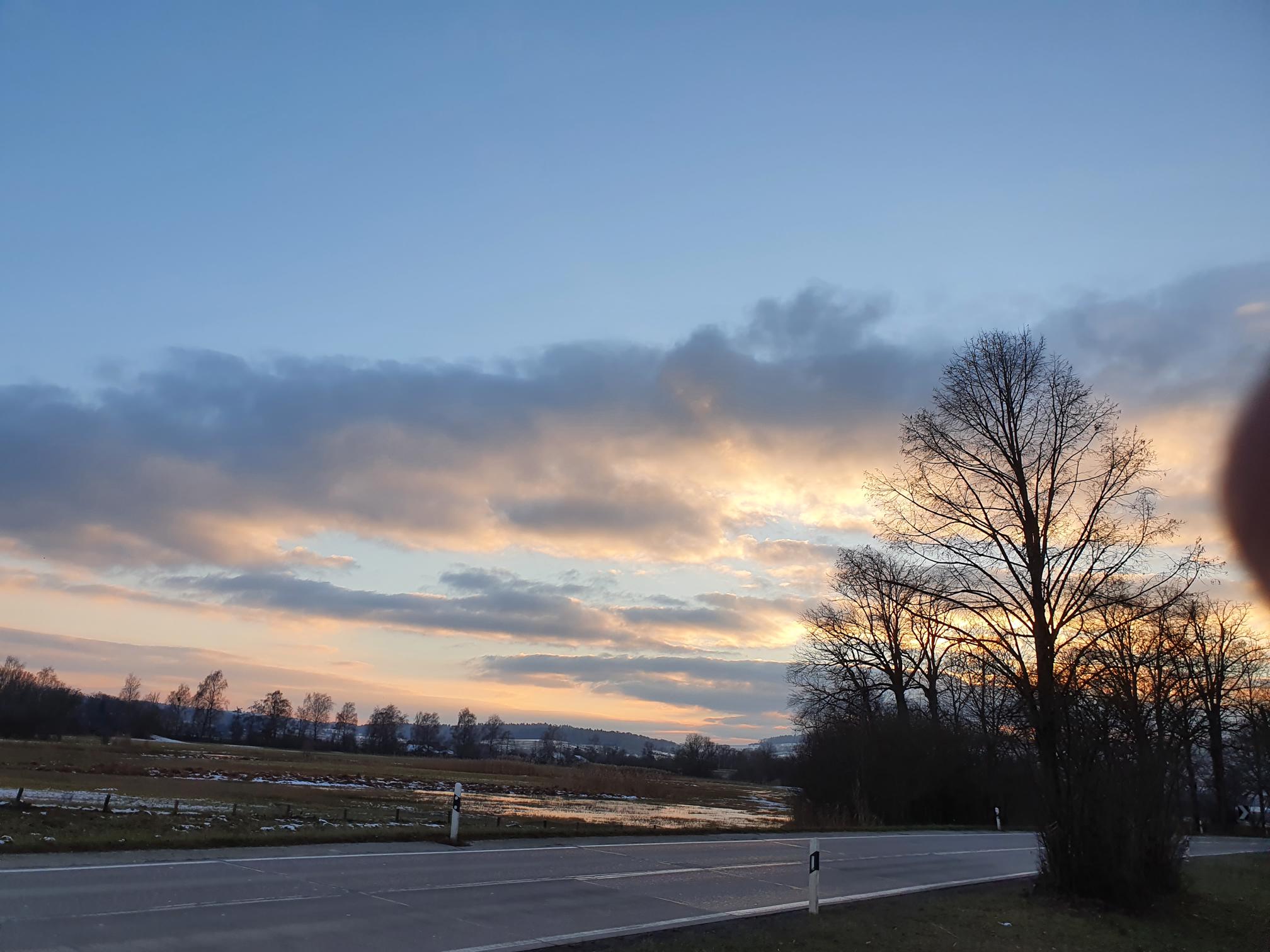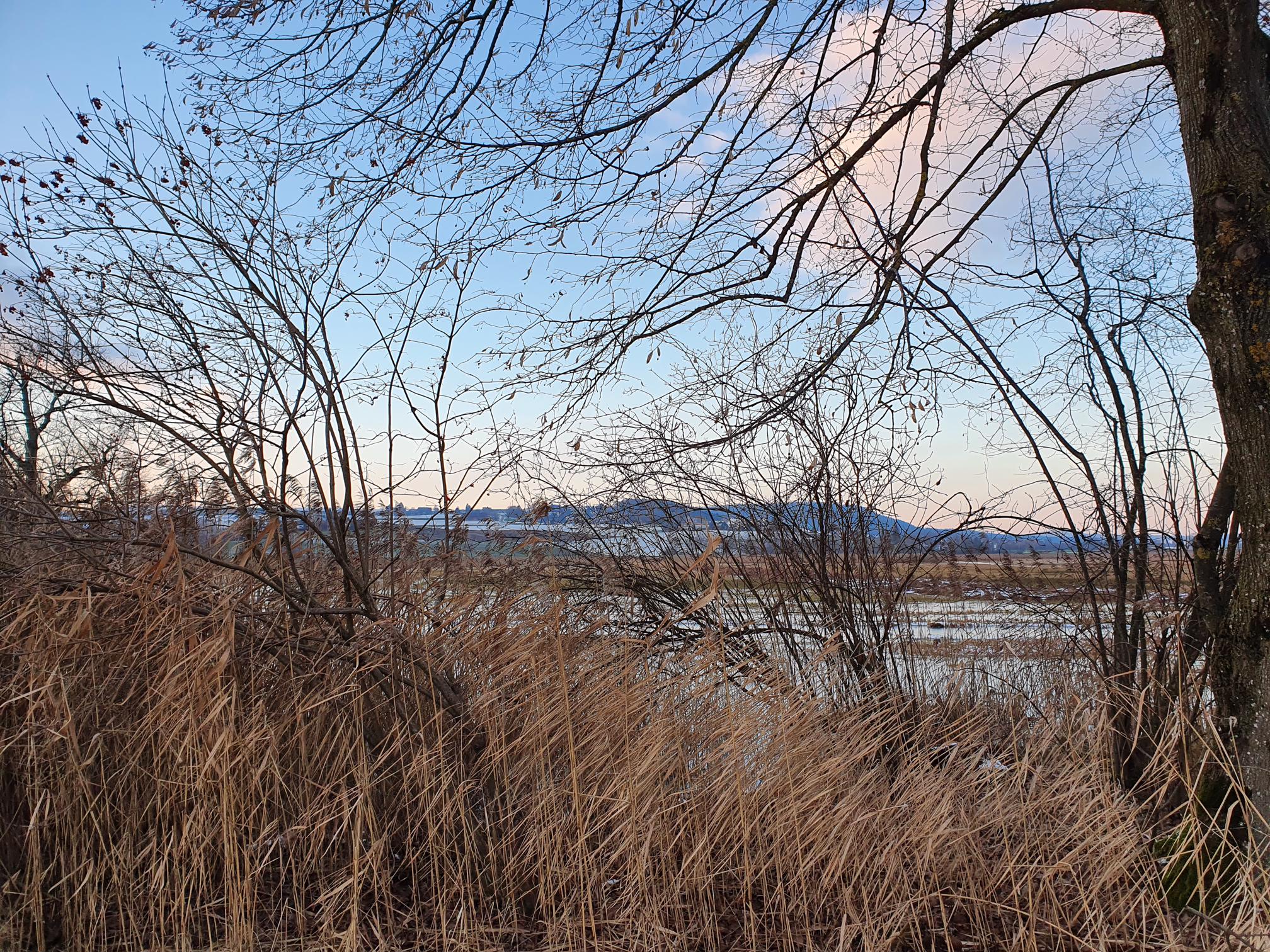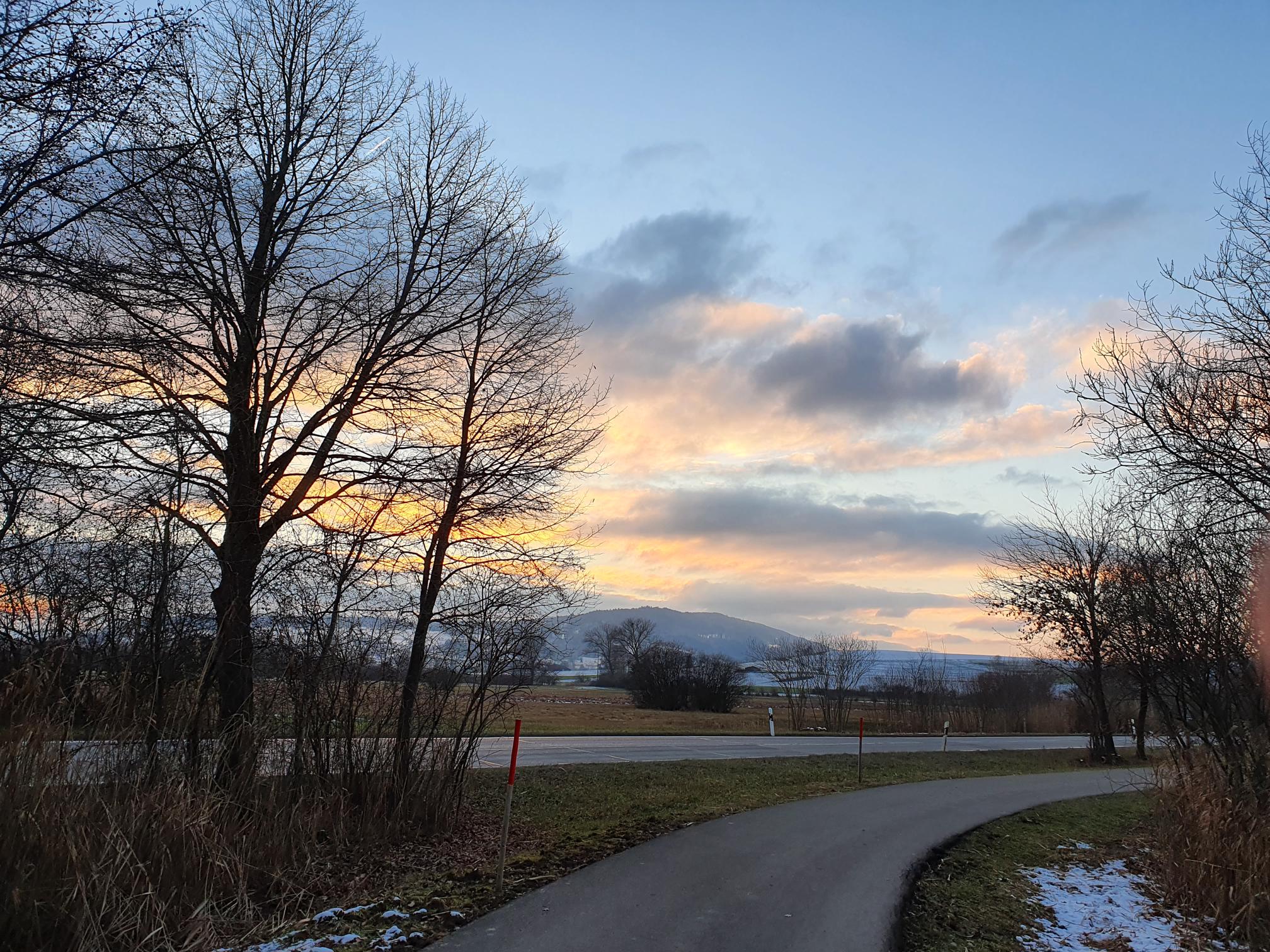The Neeracherried Nature Center is a natural play of swamp, moor and reeds. Birds nest here and plants that were thought to be lost offer space and protection to the fauna. Footbridges, observation towers and huts ensure that zoologists and simple nature lovers can observe the animals undisturbed.
In winter, most bodies of water are frozen. This makes for a particularly frosty spectacle. If you can endure the cold in winter, you can observe kingfishers, grey and great egrets, as well as teals, gadwalls, wigeons and goosander. If you're lucky, you might see water rails and bearded tits. Birds of prey include red kites and buzzards, and regularly kestrel and sparrowhawks. Storks can also be seen in large numbers. Fruit can be seen on viburnum, rowan, dog rose and blackthorn.
The Scottish Highland cattle grazing on the edges of the moors seem quite exotic.
Nature reserve
The Neeracherried covers an area of 105 hectares, making it one of the last large fens in Switzerland. This makes the fen of national importance. It provides a habitat for countless birds, plants, amphibians, reptiles and small animals. Highland cattle graze in the reeds. The Ala - Swiss Society for Ornithology and Bird Protection - has been protecting the reeds since 1927.
The landscape has been significantly transformed several times over the last 1500 years. Initially, this region was a large swamp with streams and ponds. In the Middle Ages, farmers increasingly used the marshland as pasture, while the trees were cut down. Later, canals, locks and drainage systems ensured that irrigation could be controlled. Finally, the battle for cultivation led to drainage, so that people gained more and more arable land. In the 1970s, the trend reversed and renaturation began.
Access
By car you can reach Neeracherried from Bülach in the direction of Steinmaur. Parking spaces are available.



